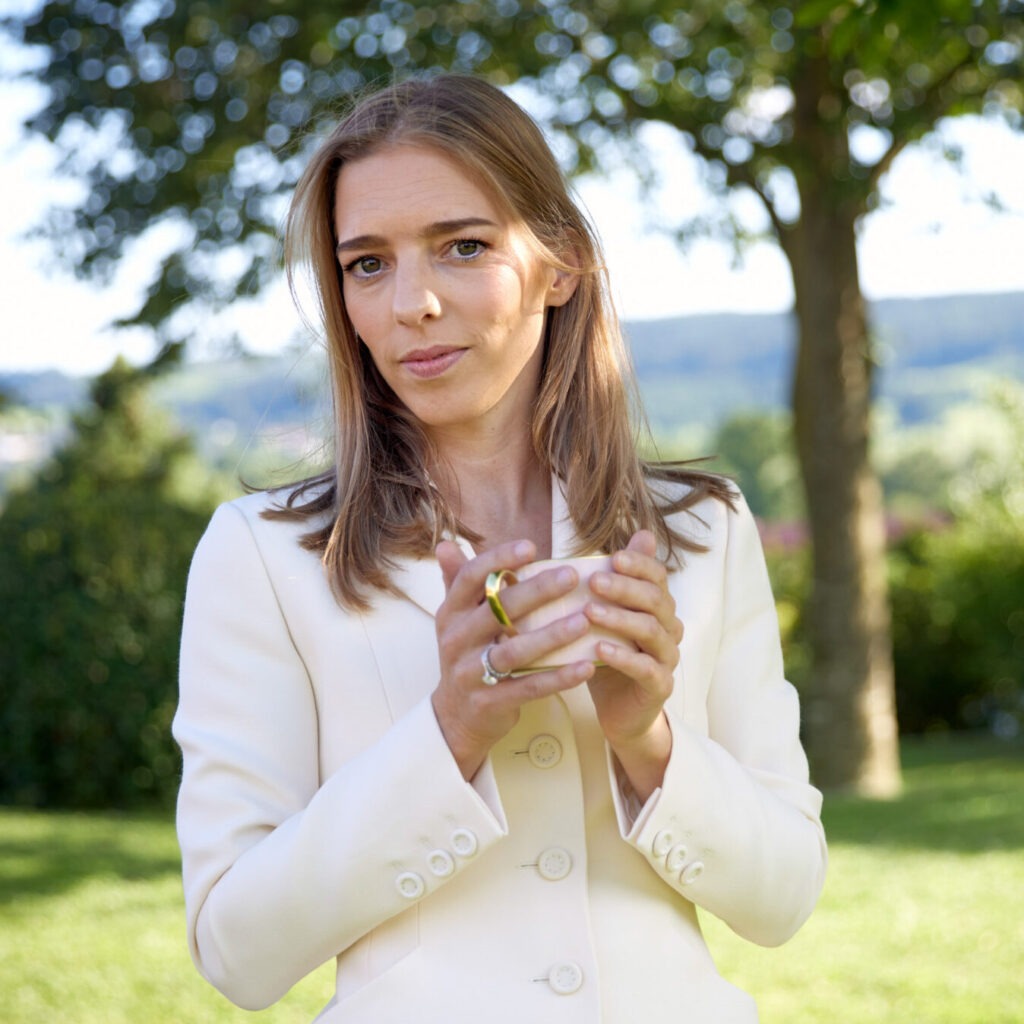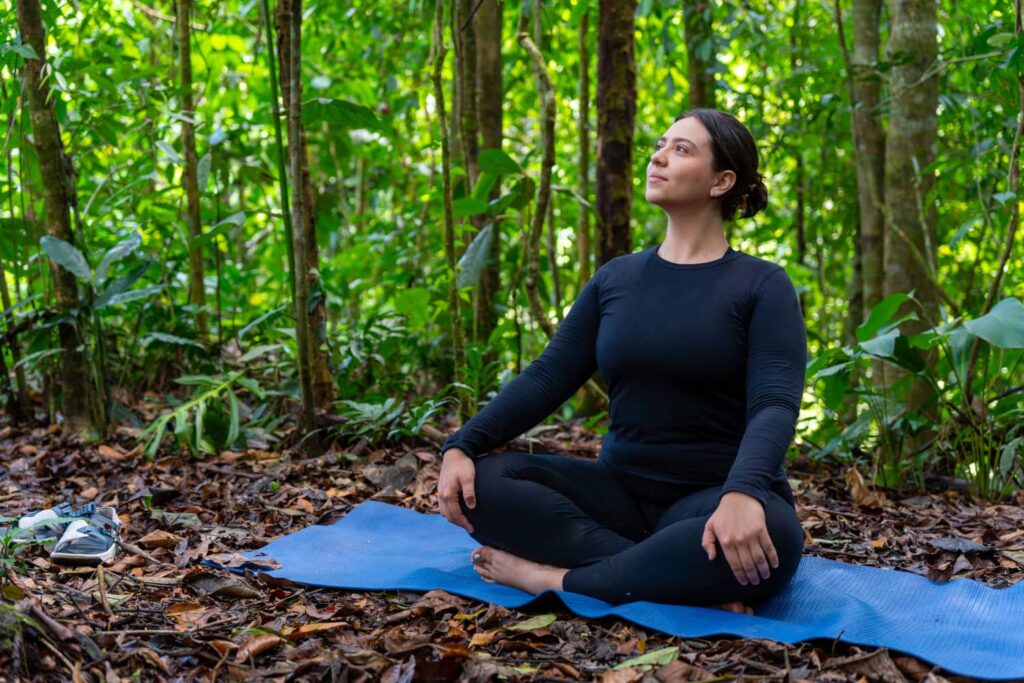Every day, our bodies drag us through the jungle of environmental toxins, stress and fast food – and secretly long for relief. Detox is not a fad, but a natural reboot on all levels. It’s about more than green juices and good intentions. What if cleansing not only freed you physically, but also mentally? This is exactly where your journey back to lightness and clarity begins.
The most important facts in brief:
- Natural detoxification: The body has its own detoxification systems in the liver, kidneys, intestines, skin and lungs, which can be specifically supported by a detox cure.
- Holistic approach: Effective detox includes not only physical, but also mental relief through stress reduction and conscious time-outs.
- Ayurvedic perspective: With Panchakarma, the millennia-old art of healing offers a profound cleansing method that is tailored to the individual constitutional type.
- Natural methods: Warm water, herbal teas, exercise and a fresh, unprocessed diet are simple but effective detox strategies for everyday life.
- Lasting effect: A sensible detox cure is not aimed at short-term effects, but at long-term improvements in well-being and health.
Contents
- What does detox actually mean?
- Doesn’t the body detoxify itself?
- Detox cure for body and mind
- Natural methods for sustainable detoxing
- Detox diet and weight management
- Practical tips for detox nutrition
- The cure to detoxify the body – according to Ayurveda
- A new detox experience: Ayurvedic, individual, effective
- Frequently asked questions
What does detox actually mean?
Detox, short for detoxification, refers to the targeted relief and support of the body’s own detoxification systems. The term is often misunderstood and associated with drastic diets or expensive products. However, true detoxification means helping the body to optimize its natural cleansing processes.
At its core, a detox cure is about reducing the absorption of harmful substances and simultaneously promoting their elimination. This is achieved through a conscious change in diet, sufficient fluid intake and activation of the metabolism. The German Nutrition Society points out that many commercial detox products are not scientifically proven.
The body’s most important detoxification pathways include:
- Liver and bile: conversion of fat-soluble toxins into water-soluble compounds
- Kidneys: Filtering of the blood and excretion via the urine
- Intestines: Elimination of waste products and toxins
- Skin: excretion via sweat and sebaceous glands
- Lungs: release of carbon dioxide and volatile pollutants
Doesn’t the body detoxify itself?
Yes, the human body has a sophisticated detoxification system. The liver, kidneys, intestines, skin and lungs work continuously to neutralize and eliminate harmful substances. These organs are highly efficient and designed for daily detoxification.
However, our detoxification systems can be overloaded by modern living conditions. Environmental toxins, drug residues, stress and an unhealthy diet pose a challenge. A targeted detox cure can support the body in its natural detoxification by relieving these organs and optimizing their functions.
The liver is the central detoxification organ. It converts fat-soluble toxins into water-soluble compounds, which can then be excreted via the kidneys. Supporting liver function is therefore the focus of many serious detox programs.

Detox cure for body and mind
A holistic detox cure works on several levels. It not only cleanses the physical body, but can also relieve mental stress. The connection between body and mind is inseparable – when we feel lighter physically, our mental clarity often improves too.
Metabolism and degradation processes
During a detox cure, metabolic processes are activated that contribute to the improved elimination of harmful substances. The body increasingly draws on fat reserves in which fat-soluble toxins can accumulate. Mobilizing these substances is an important step in the detoxification process.
At the same time, digestion and intestinal function are optimized. A healthy gut is crucial for the elimination of toxins and the prevention of their reabsorption into the blood. A high-fiber diet and probiotic foods support intestinal health during a detox cure.
Mental relief through inner peace
A detox cure also offers the opportunity to “clean up” mentally. By consciously avoiding digital overstimulation, stress and negative thought patterns, inner peace can be created. Mental detox means giving the mind space for regeneration.
Relaxation techniques such as meditation, yoga or conscious breathing exercises enhance this effect. They reduce stress hormones and promote the release of feel-good messengers. The holistic perspective of an Ayurvedic detox cure pays particular attention to this connection.
Natural methods for sustainable detoxing
No expensive special products are needed for effective detoxification. Natural methods that are suitable for everyday use can effectively support the body in its cleansing processes. These approaches can be easily integrated into everyday life and offer long-term benefits.
The most important natural detox methods at a glance:
- Hydration: Plenty of water and herbal teas support the kidneys in excretion.
- Exercise: Regular physical activity promotes blood circulation and perspiration.
- Sauna: Sweating helps to eliminate harmful substances through the skin.
- Liver-relieving herbs: Milk thistle, dandelion and artichoke support liver function.
- High-fiber diet: Promotes intestinal health and elimination via the intestines.
Warm water and herbal teas
One of the simplest and most effective detox methods is to drink warm water regularly. It stimulates the metabolism and supports elimination via the kidneys and skin. Especially in the morning on an empty stomach, a glass of warm water, possibly with a little fresh lemon juice, can kick-start the detoxification process.
Herbal teas supplement this effect with specific medicinal herbs. Dandelion, milk thistle and artichoke support liver function, while nettle and birch leaves stimulate kidney activity.

Physical sweating
Regular physical activity is a natural way to promote detoxification. Exercise stimulates blood circulation and toxins can be excreted through sweat. Moderate endurance training such as jogging, swimming or cycling is particularly effective.
Sauna sessions can also support the detoxification process. Sweating in the sauna stimulates elimination through the skin and improves circulation. In Ayurveda, sweating (svedana) has been used for thousands of years as a cleansing method, often in combination with garshan massages to stimulate lymph flow.
Detox diet and weight management
A detox diet can have positive side effects on body weight, but should not be seen primarily as a weight loss strategy. The focus is on cleansing and regeneration, not on rapid weight loss. Nevertheless, a detox diet can lay the foundation for healthy weight management.
During a detox diet, processed foods, sugar and white flour products are avoided. This change often leads to natural weight loss as excess water is excreted and fewer empty calories are consumed.
A balanced detox diet can help you lose weight by reducing cravings and improving the feeling of satiety. The nutrient density of the recommended foods contributes to healthier eating habits and can lead to a more stable weight in the long term.
Lose weight with Ayurveda
In our detailed guide, you can find out how Ayurvedic principles can help you lose weight in a healthy and sustainable way. Find out which diet is best suited to your constitutional type.
Practical tips for detox nutrition
A detox diet is based on fresh, natural foods that nourish the body and relieve stress at the same time. The focus here is on avoiding processed products. This type of diet supports the natural detoxification processes and provides the body with important nutrients.
A detox diet is based on plenty of fresh fruit and vegetables, which provide antioxidants and phytochemicals. These substances support liver function and protect cells from oxidative stress. Green leafy vegetables, cruciferous vegetables such as broccoli and cabbage as well as berries and citrus fruits are particularly valuable.
High-quality proteins are also important, as they support the detoxification enzymes in the liver. Legumes, nuts, and seeds are ideal plant-based sources of protein. Adequate fluid intake complements the detox diet in the form of water, herbal teas, and freshly squeezed juices.

“Dietary supplements can provide wonderful support for the body—provided the internal foundation is right. Without prior cleansing and a strong agni—a healthy digestive fire—many of these remedies cannot fully develop their effects. Detoxify first, then supplement specifically: This is the more sustainable approach.”
Christina Drexler, Holistic Ayurveda Expert & Managing Director of Ayurveda Resort Mandira
The cure to detoxify the body – according to Ayurveda
A truly effective detoxification program considers the person as a whole. The Ayurvedic tradition offers a particularly valuable approach here, as it has understood body and mind as a unity for thousands of years. A detox program should therefore consider physical, mental, and emotional aspects.
Ayurvedic impulses
In Ayurveda, detoxification is referred to as “ama reduction.” Ama are undigested metabolic wastes that can accumulate in the body and cause discomfort. The Panchakarma treatment is the traditional Ayurvedic cleansing therapy that aims to eliminate these substances.
Panchakarma treatment includes various techniques such as oil massages, sweating, and a special diet. It is individually tailored to the body’s constitutional type (dosha) and can be particularly effective in eliminating heavy metals and other environmental toxins. This holistic approach makes Panchakarma a particularly profound cleansing method.
Mental balance with yoga
Yoga is an ideal companion for any detox program. Certain asanas (postures) massage the internal organs and promote blood circulation. Twists and forward bends particularly stimulate the digestive organs and support detoxification.
The combination of movement, breathing, and meditation makes yoga a holistic tool for physical and mental cleansing. Stress reduction through regular yoga practice calms the nervous system—an important factor for successful detoxification, as stress can impair detoxification functions.

Rediscover detox: Ayurvedic, individual, effective
An Ayurvedic detox treatment is far more than a short-lived health fad—it’s a proven way to relieve the body, clear the mind, and regain balance. At the Ayurveda Resort Mandira, this cleansing becomes a profound experience that combines tradition with contemporary expertise. Tailored to your personal constitution, the treatment guides you step by step toward renewed lightness, vitality, and inner peace.
Time for a reboot?
Your detox treatment at the Ayurveda Resort Mandira combines authentic treatments with modern health expertise – for new energy, clarity, and well-being.
Common Questions
How long does it take to truly detoxify the body?
Truly detoxifying the body takes several days to weeks, depending on the method and individual stress level. An effective detox program should last at least seven days to allow for relief, elimination, and regeneration. For a profound effect, Ayurvedic practice often recommends periods of two to three weeks.
Does detox have side effects?
Detox can have side effects, especially in the first few days. These include headaches, fatigue, irritability, or circulatory problems. These reactions are usually caused by the change and increased excretion. With appropriate implementation and proper supervision, they are usually temporary and indicate active detoxification processes.
How often can you do a detox?
Detox treatments can be performed two to four times a year. Seasonal transitions in spring and fall are particularly suitable. Lighter measures such as warm lemon water or herbal teas, however, can be integrated into your daily routine and support continuous detoxification throughout your day.
Cover image: © Malambo/peopleimages.com – stock.adobe.com; Image 1: © gstockstudio – stock.adobe.com; Image 2: © Halfpoint – stock.adobe.com; Image 3: © Ricardo Espinoza L – stock.adobe.com



